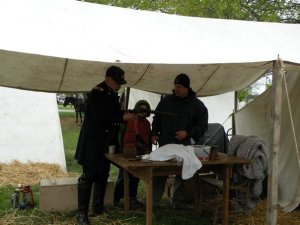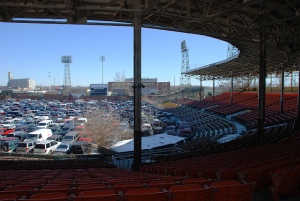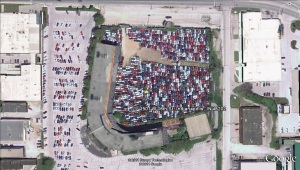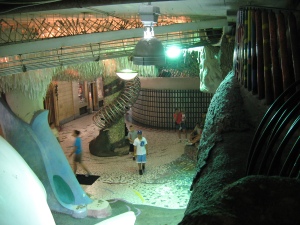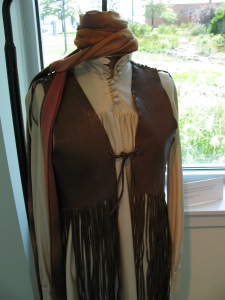by Christina Carlson-
As I reflect on this course on public history, I find that a few main ideas and thoughts stick out from the many things we learned throughout the semester. One of the themes I am continually brought back to is the sometimes conflicting relationship between public and academic history.
Maybe I am most struck by this discussion as my studies at SIUE have continuously revolved around these two sides of the historical discipline. As an MA student in Historical Studies, as well as a student in the Museum Studies program, I have often noticed places where academic and public history seem mutually exclusive. One example would be in a museum collections management class I took, where the attention of the registrar and conservator was given fully to the condition and physical description of the object, with little thought as to the object’s historical significance or the story behind it. At the same time, in my academically focused history classes, objects themselves were not considered at all.
Within this class we have run up against many places where the need to draw in the public has been at odds with a history more focused on raising broader and more difficult historical questions. As we discussed the work we were doing with our community partner, we immediately realized the limitations of our group projects. Even as we recognized both positive and negative aspects to the issues of immigration, race, Americanization, and labor in the small, multi-ethnic community of Lincoln Place, we also realized restrictions in telling these stories in more complex ways. We were forced to ask ourselves how we could appropriately and truthfully represent Lincoln Place in a way that would be beneficial to the community, while also representing a thorough historical account of the neighborhood.
As we toured local historical sites and met with professionals in the field, we witnessed this conflict between academic and public history as well. At the Holocaust Museum, for example, we recognized how difficult it can be to tell all of the relevant pieces of an event such as the Holocaust of World War II, especially in a space as small as that museum.
I am also acutely aware of the relationship between academic and public history as my future career will likely continue to fall somewhere between these two worlds. Even now, I am working on a project for the Saint Louis Science Center about the history of organ transplants. As I complete this small project, I must continually keep in mind how I can engage visitors while telling a story that isn’t just about scientific triumph, but also about many failed transplants and unsuccessful experiments. It may be a different situation than the one in Lincoln Place or the Holocaust Museum, but I think the essential idea remains the same.
Finding a balance between these two worlds sometimes seems difficult, and yet I think this balance is worth striving toward. After thinking through and discussing these ideas repeatedly during this class, I believe both the academic and public sides of history can benefit greatly from the perspective the other side provides.

